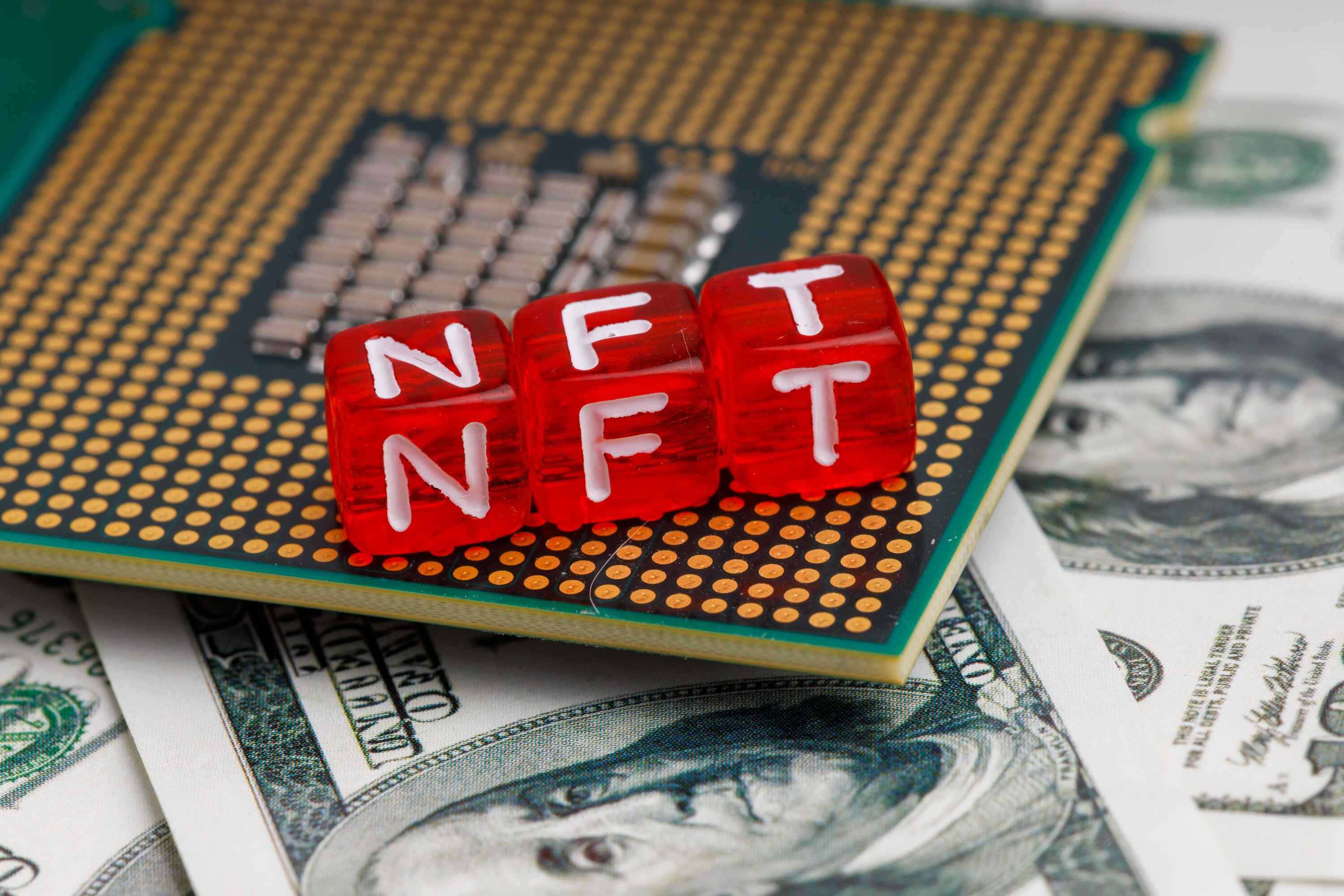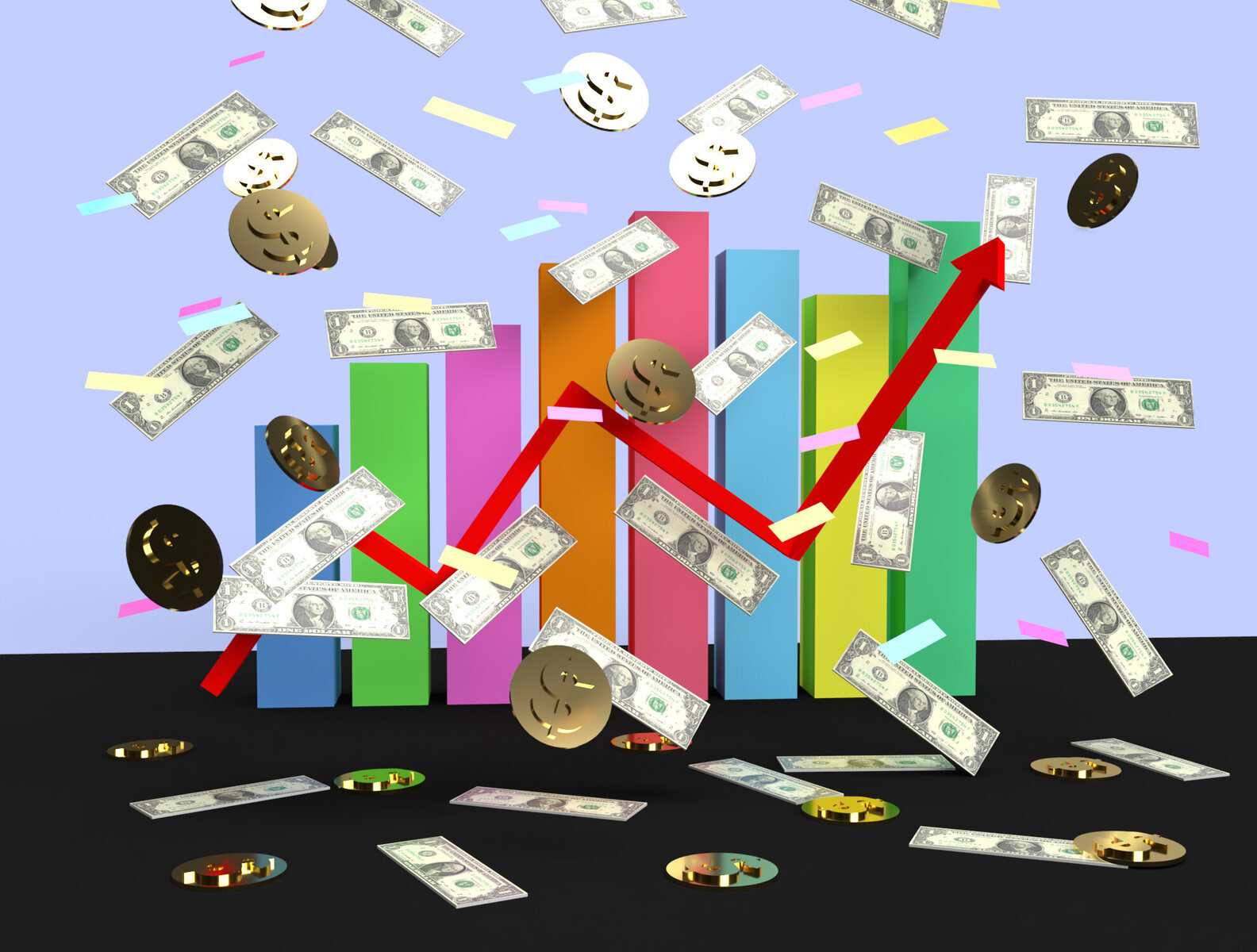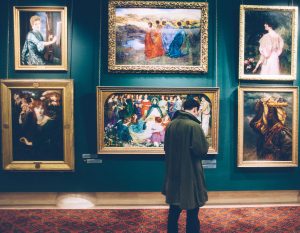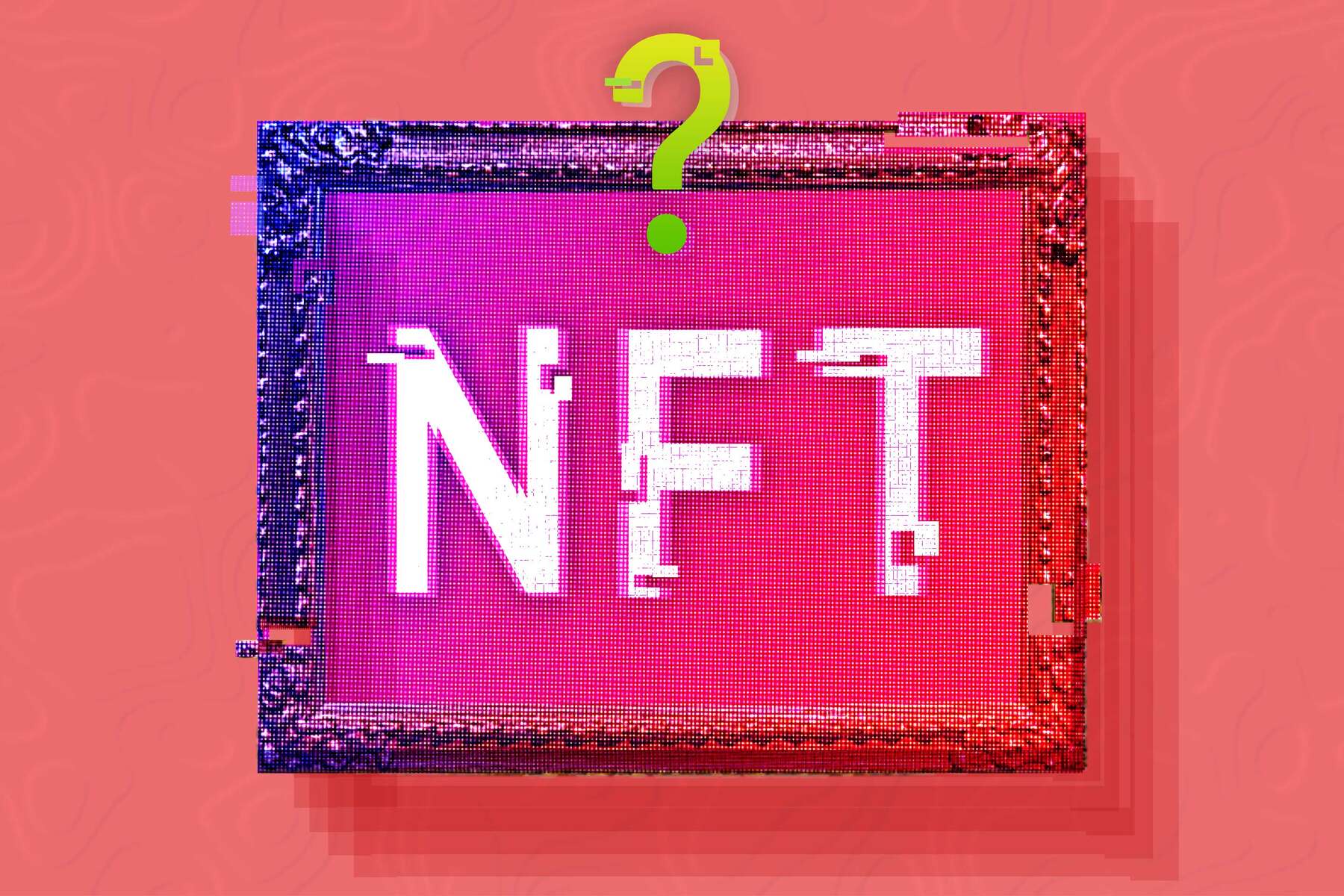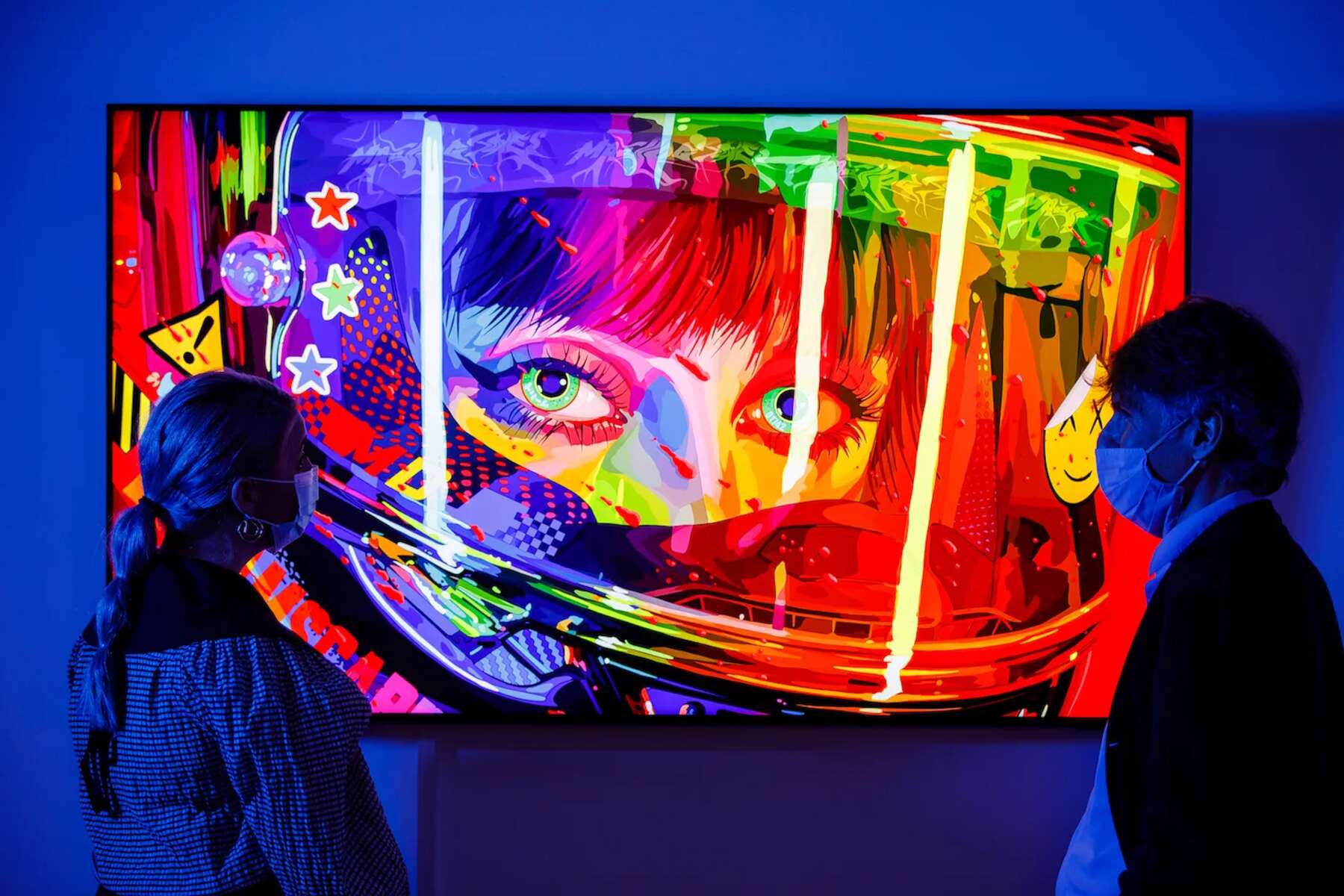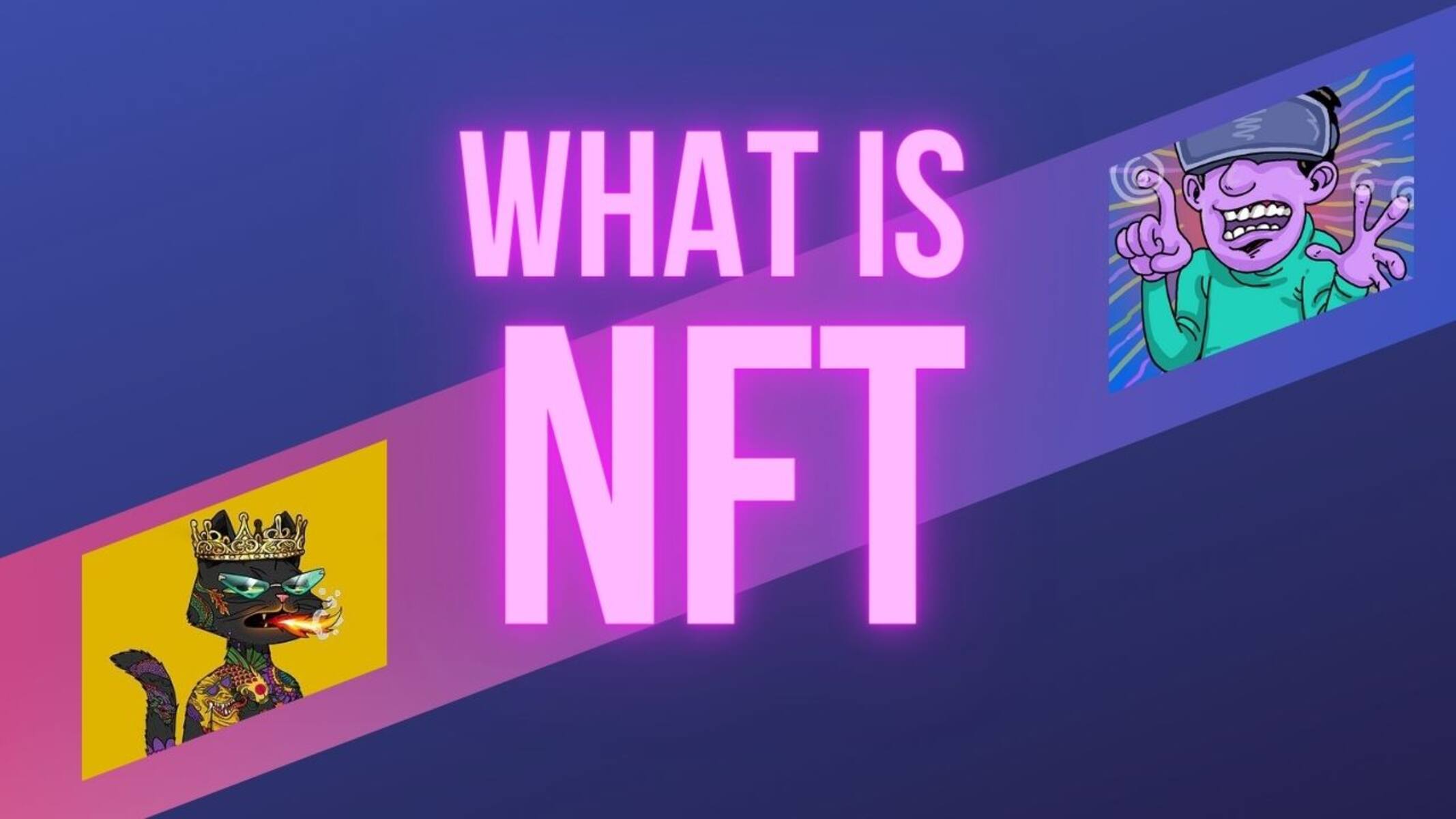Introduction
Welcome to the world of NFTs, the latest buzzword in the digital realm. If you’ve been hearing about NFTs everywhere and are wondering what they actually mean, you’re in the right place. In this article, we’ll dive into the definition of NFTs, explore how they work, discuss their advantages and industry applications, address criticisms and concerns surrounding them, showcase famous NFT examples, and provide insights on buying, selling, and owning these digital assets.
NFT stands for Non-Fungible Token. Unlike cryptocurrencies such as Bitcoin or Ethereum that are fungible and can be exchanged on a one-to-one basis, NFTs represent unique digital items that are indivisible and cannot be exchanged on an equal value basis. Each NFT has a distinct value and is different from any other NFT, making it one-of-a-kind. These digital assets can represent various forms of media, including images, videos, audio files, virtual real estate, virtual goods in games, and even tweets.
So how do NFTs work? At a high level, NFTs are built on blockchain technology, which ensures ownership, authenticity, and transparency. Each NFT is minted and recorded on a blockchain, typically the Ethereum blockchain, using smart contracts. This creates a permanent and immutable record of ownership, enabling creators and collectors to prove the authenticity and ownership of their digital assets. Transactions involving NFTs are recorded on the blockchain, making it easy to track the provenance and history of the asset.
The rise of NFTs has brought about several advantages and opportunities. For artists and creators, NFTs provide a new avenue to monetize their work directly, without the need for intermediaries. NFTs enable artists to receive royalties from secondary sales and attract a global audience. Additionally, NFTs can revolutionize ownership of digital goods in the gaming industry, enabling players to truly own their in-game items and transfer them across different platforms.
Various industries are also exploring the applications of NFTs. The art world, in particular, has been significantly impacted by NFTs, as artists can now sell and showcase their digital artwork in a secure and transparent manner. NFTs also have the potential to transform ticketing systems, supply chain management, and even real estate ownership.
Despite the excitement around NFTs, there have been criticisms and concerns. Some argue that NFTs contribute to environmental issues due to the energy-intensive nature of blockchain technology. Others express concerns about the speculative nature of the market and the potential for fraud. It is essential to be mindful of these criticisms and ensure responsible and sustainable practices.
In the next sections, we’ll explore famous NFT examples, delve into how to buy, sell, and own NFTs, and discuss the future outlook for this emerging technology.
Definition of NFT
A Non-Fungible Token, or NFT, is a digital asset that represents ownership or proof of authenticity of a unique item or piece of media. Unlike cryptocurrencies such as Bitcoin or Ethereum, which are fungible and can be exchanged on a one-to-one basis, NFTs are indivisible and cannot be exchanged on an equal value basis. Each NFT has a distinct value and is different from any other NFT, making it one-of-a-kind.
Think of NFTs as digital certificates of ownership for digital or physical assets. They are built on blockchain technology, typically the Ethereum blockchain, using smart contracts. This ensures transparency and immutability by recording all transactions and ownership changes on the blockchain. Each NFT has a unique identifier that confirms its authenticity and ownership.
There are various types of media that can be represented as NFTs, including images, videos, music files, 3D models, virtual real estate, and even tweets. These digital assets can be created by individuals, artists, musicians, or even brands. NFTs have opened up new possibilities for creators to monetize their work directly and establish a direct connection with their audience.
One key aspect of NFTs is that they can include metadata, which provides additional information about the asset. This can include details about the creator, the creation date, the edition number if it is part of a limited series, and any other relevant information. The metadata adds value and context to the NFT, making it more than just a digital file.
Unlike physical assets, NFTs exist purely in the digital realm. However, they can be bought, sold, and owned just like physical assets. Ownership of an NFT is recorded on the blockchain, which makes it easy to verify the current owner and the entire ownership history of the asset. This transparency and provenance tracking are key features that set NFTs apart from traditional digital files.
NFTs have gained significant attention and popularity in recent years, with high-profile sales and endorsements from celebrities and artists. The market for NFTs is constantly evolving, with new platforms and marketplaces emerging to facilitate the buying, selling, and trading of these digital assets.
In summary, NFTs are unique digital assets that represent ownership or proof of authenticity of a specific item or piece of media. They are indivisible and cannot be exchanged on an equal value basis. NFTs are built on blockchain technology, ensuring transparency and immutability. These digital assets can be created and owned by individuals, artists, musicians, or brands, and can include metadata to provide additional context and value. The market for NFTs is expanding rapidly, opening up new opportunities for creators and collectors in the digital realm.
How NFTs Work
Understanding how NFTs work requires knowledge of blockchain technology and smart contracts. NFTs are built on blockchain networks, with Ethereum being the most popular choice due to its support for smart contracts and its robust infrastructure.
When an NFT is created, it is minted on the blockchain using a smart contract. The smart contract serves as the code that defines the unique characteristics and properties of the NFT. It contains information such as the owner’s address, the metadata associated with the NFT, and any additional conditions or restrictions set by the creator.
Once an NFT is minted and recorded on the blockchain, it becomes immutable and cannot be altered or replicated. This ensures the authenticity and ownership of the NFT. The ownership of an NFT is tracked using the owner’s address, which is recorded on the blockchain. This public ledger allows anyone to trace the ownership history of an NFT and verify its legitimacy.
One of the key benefits of NFTs is the ability to include metadata. Metadata provides additional information about the NFT, such as the creator’s name, creation date, description, and any other relevant details. This metadata adds value and context to the NFT, making it more than just a digital file. It can be accessed and viewed by anyone interested in the NFT, enhancing transparency and facilitating the understanding of the asset.
When it comes to buying and selling NFTs, various platforms and marketplaces have emerged to facilitate these transactions. These platforms act as intermediaries, connecting artists, creators, and collectors. They provide a user-friendly interface for browsing, buying, and selling NFTs, as well as the necessary tools for managing and transferring ownership.
When a collector decides to purchase an NFT, they typically need to have a cryptocurrency wallet that is compatible with the blockchain on which the NFT is built. The wallet allows them to store their NFTs securely and manage their digital assets. Once the purchase is made, the ownership of the NFT is transferred to the buyer’s wallet address on the blockchain. This transfer is recorded on the blockchain, providing a transparent and immutable record of ownership.
As for the creator, they usually earn a percentage of the sale price whenever their NFT is resold in the secondary market. This is made possible through the use of smart contracts, which can be programmed to automatically allocate royalties to the creator each time the NFT is sold again. This feature has revolutionized the art industry, as artists can now continue to earn from their work even after the initial sale.
In summary, NFTs work by leveraging blockchain technology and smart contracts. They are minted on the blockchain using a unique code that defines their characteristics and ownership details. NFTs can include metadata to provide additional information about the asset. Platforms and marketplaces facilitate the buying, selling, and trading of NFTs, connecting creators and collectors. Transactions are securely recorded on the blockchain, ensuring transparency and traceability. NFTs have also introduced a new revenue stream for creators by enabling royalties on secondary sales.
Advantages of NFTs
NFTs have brought about several advantages and opportunities, revolutionizing the way we interact with digital assets. Here are some key advantages of NFTs:
Direct Artist and Creator Engagement: NFTs provide creators with a direct connection to their audience. Artists and creators can now sell their work directly to collectors without the need for intermediaries, such as galleries or agents. This allows artists to retain more control over their artistic vision and establish a closer relationship with their fans.
Monetization of Digital Assets: NFTs have opened up new avenues for artists, musicians, and content creators to monetize their digital assets. Unlike traditional methods of selling digital files, such as prints or downloads, NFTs allow creators to sell the original, unique version of their work. This scarcity and exclusivity can significantly increase the value of digital assets.
Secondary Market Royalties: One of the groundbreaking features of NFTs is the ability for creators to earn royalties on secondary market sales. Traditionally, artists only benefited from the initial sale of their artwork. With NFTs, creators can earn a percentage of the sale price every time their NFT is resold in the secondary market. This ongoing revenue stream has the potential to significantly increase the income of artists and incentivize the creation of more high-quality digital assets.
Fractional Ownership: NFTs also enable fractional ownership, allowing multiple individuals to own a portion of an NFT. This concept is particularly useful for high-value assets that may be out of reach for individual collectors. Fractional ownership allows individuals to invest in a portion of an NFT, pooling their resources with others to collectively own and benefit from the asset’s value.
Immutable Ownership and Provenance: NFTs are built on blockchain technology, ensuring the immutability and transparency of ownership. Every transaction involving an NFT is recorded on the blockchain, creating a permanent and verifiable record of the asset’s ownership history. This eliminates the risk of counterfeit or fraudulent NFTs, providing collectors with a high level of confidence in the authenticity of the assets they own.
Global Reach and Accessibility: NFTs have global reach, allowing creators to connect with collectors from around the world. Digital assets can now be easily discovered and acquired by individuals across geographical boundaries. This opens up new markets and audiences for creators, expanding their reach beyond local limitations.
Interoperability and Cross-Platform Integration: NFTs have the potential to break down barriers between different platforms and ecosystems. NFTs built on compatible blockchains can be seamlessly transferred and used across multiple platforms and applications. This interoperability allows for the integration of NFTs into various industries, such as gaming, virtual reality, and even decentralized finance.
These advantages of NFTs have the potential to reshape the digital landscape, creating new possibilities for artists, creators, and collectors. As the market for NFTs continues to evolve, we can expect to see further advancements and innovations that enhance these benefits.
Industry Applications of NFTs
The applications of Non-Fungible Tokens (NFTs) extend beyond the art world and have the potential to disrupt various industries. Let’s explore some of the industry applications of NFTs:
Art and Collectibles: The art world has been one of the first industries to fully embrace NFTs. NFTs provide artists with a new way to showcase and sell their digital artwork, ensuring authenticity, provenance, and direct engagement with collectors. Collectors are drawn to the uniqueness and scarcity of digital art NFTs, establishing a new market for digital collectibles.
Gaming and Virtual Assets: NFTs have the potential to revolutionize the gaming industry by enabling true ownership of in-game assets. With NFTs, players can own and trade their virtual assets, such as weapons, skins, or even virtual real estate, across different games and platforms. This creates a new economy within the gaming world, giving players more control and value for their virtual possessions.
Music and Entertainment: NFTs offer musicians and entertainers an alternative revenue stream and a direct connection to their audience. Musicians can sell exclusive music tracks, concert tickets, or unique experiences as NFTs. This empowers artists to monetize their work and engage with fans in new and exciting ways.
Social Media and Content Creation: NFTs can be leveraged in the realm of social media and content creation. Creators can tokenize their posts, enabling fans to own an exclusive version or access to behind-the-scenes content. This adds value to the creator’s content and allows fans to support their favorite creators directly.
Ticketing and Events: NFTs can transform the ticketing industry by ensuring secure and verifiable ticket sales. NFT tickets provide a transparent record of ownership and prevent fraud, scalping, and counterfeit tickets. Additionally, NFTs can be used to grant access to exclusive events or VIP experiences.
Supply Chain Management: NFTs have the potential to improve supply chain transparency and traceability. NFTs can be used to track the origin, authenticity, and ownership of physical goods throughout the supply chain. This can help combat counterfeiting, ensure ethical sourcing, and provide consumers with verifiable information about the products they purchase.
Real Estate and Property Ownership: NFTs can revolutionize the real estate industry by digitizing property ownership. By tokenizing real estate assets, property ownership can be securely recorded on the blockchain, ensuring transparency and simplifying property transactions. Fractional ownership of real estate can also be facilitated through NFTs, allowing multiple individuals to invest in properties.
These are just some examples of how NFTs are being applied across industries. As the technology matures and more use cases emerge, we can expect to see further integration of NFTs in diverse sectors, unlocking new opportunities and transforming traditional business models.
Criticisms and Concerns Surrounding NFTs
While Non-Fungible Tokens (NFTs) have gained significant popularity and adoption, they have also faced criticisms and raised concerns within the industry. Here are some of the key criticisms and concerns surrounding NFTs:
Environmental Impact: One of the main criticisms of NFTs is their environmental impact. Most NFTs are built on the Ethereum blockchain, which relies on a consensus mechanism called Proof of Work (PoW). PoW requires substantial computational power, leading to high energy consumption and contributing to carbon emissions. Critics argue that the energy-intensive nature of NFT transactions contradicts the push for sustainability and renewable energy.
Value and Speculative Nature: NFTs have been associated with speculative behavior, with some likening the market to a bubble. The high-profile sales and media attention around certain NFTs have led to questions about the long-term value and sustainability of the market. Skeptics argue that the price tags attached to NFTs may not necessarily align with the intrinsic value of the underlying digital assets.
Licensing and Intellectual Property Issues: NFTs have raised concerns regarding licensing and intellectual property rights. While NFTs provide ownership of the digital asset, they may not grant rights to the intellectual property associated with it. An NFT purchaser may own a unique piece of digital art, for example, but the artist or original copyright holder may still retain exclusive rights to reproduce or use the work in other contexts.
Market Saturation and Quality Control: The rapid surge of NFTs entering the market has raised concerns about market saturation and quality control. With the barrier to entry becoming lower, there is a growing flood of NFTs, making it more challenging for individual artists to stand out and find an audience. Critics argue that this saturation may dilute the value of NFTs overall and pose challenges for discerning collectors.
Lack of Regulation and Security: The NFT market is still relatively new and largely unregulated. This lack of regulation can lead to potential scams, counterfeit NFTs, and security vulnerabilities. Users need to exercise caution when transacting and ensure the platforms they use have implemented proper security measures to protect against fraudulent activities.
Social and Economic Inequality: Some critics argue that the NFT market exacerbates socioeconomic inequality. They contend that the high prices and exclusivity of certain NFTs create barriers for entry, limiting access for artists from disadvantaged backgrounds. Additionally, the concentration of wealth and influence within certain segments of the NFT market has also raised concerns about the division between established creators and emerging talents.
It’s important to acknowledge and address these criticisms and concerns within the NFT space. As the industry continues to evolve, there is a need for responsible practices, increased transparency, and sustainable approaches to ensure the long-term viability and positive impact of NFTs.
Famous NFT Examples
The rise of Non-Fungible Tokens (NFTs) has brought about several high-profile and influential examples that have captured the attention of the media and the public. Here are a few famous NFT examples:
Everydays: The First 5000 Days by Beeple: Perhaps the most notable NFT sale to date, Everydays is a digital artwork by the artist Beeple. It is a collage of all the digital art pieces he created daily for over 13 years. In March 2021, the NFT of Everydays was auctioned by Christie’s for a record-breaking $69.3 million, solidifying NFTs’ place in the art world.
CryptoPunks: CryptoPunks are a collection of 10,000 unique, pixelated characters or avatars, each with distinct characteristics. These NFTs were among the earliest pioneers in the NFT space and have gained significant popularity. Some of these digital collectibles have sold for millions of dollars, with owners using them as status symbols within the NFT community.
Twitter CEO Jack Dorsey’s First Tweet: In March 2021, Twitter CEO Jack Dorsey auctioned his first tweet as an NFT. The tweet, “just setting up my twttr,” was sold for $2.9 million. This example highlighted the potential for NFTs to provide value and exclusivity to digital assets and social media content.
Nyan Cat: Nyan Cat is a popular internet meme featuring a flying cat with a pop-tart body leaving a rainbow trail. The creator, Chris Torres, turned the meme into an NFT and auctioned it off for approximately $590,000. This example demonstrates the cultural significance of NFTs, allowing digital content creators to monetize and preserve their internet legacy.
NBA Top Shot: NBA Top Shot is an NFT platform that allows users to buy, sell, and own highlights from NBA games. Users can collect and trade these unique moments in the form of NFTs, creating a new market for sports memorabilia. Some NBA Top Shot moments have sold for staggering amounts, attracting both sports enthusiasts and NFT collectors.
Art Blocks: Art Blocks is a platform that offers generative art projects through NFTs. These projects involve algorithms creating unique artworks based on certain parameters set by the artists. Collectors are drawn to the rarity and the algorithmically generated aesthetics of these NFT art projects.
These famous NFT examples illustrate the broad range of digital assets that can be tokenized as NFTs, from digital art to social media content to sports highlights. Their high-profile sales have propelled NFTs into the mainstream, sparking conversations about the future of digital ownership and the democratization of art and collectibles.
Buying, Selling, and Owning NFTs
Buying, selling, and owning Non-Fungible Tokens (NFTs) involves navigating various platforms, marketplaces, and digital wallets. Here’s a breakdown of the process:
Finding NFT Marketplaces: To participate in the NFT market, you need to find a reputable NFT marketplace. Some popular platforms include OpenSea, Rarible, SuperRare, and NBA Top Shot. These marketplaces act as intermediaries, connecting artists, creators, and collectors, and providing a platform for buying, selling, and trading NFTs.
Creating a Digital Wallet: To engage in NFT transactions, you’ll need a digital wallet that is compatible with the blockchain network hosting the NFTs you’re interested in. Ethereum-based NFTs, for example, require a wallet that supports the Ethereum blockchain. Wallets like MetaMask, Coinbase Wallet, and Trust Wallet are commonly used. Set up your wallet, make sure to backup your private keys or recovery phrases securely, and fund it with the cryptocurrency required to purchase NFTs.
Browsing and Discovering NFTs: NFT marketplaces allow you to browse and discover a wide variety of NFTs. You can explore different categories, such as art, music, collectibles, and more. Look for curated collections, featured artists, and trending NFTs to find assets that align with your interests. You can also follow specific creators or artists to stay updated on their latest releases.
Bidding or Buying NFTs: Once you find an NFT you’re interested in, you can either place a bid or make an outright purchase. Some NFTs are sold through auctions, where the highest bidder at the end of the auction period wins the asset. Other NFTs may have a fixed price tag, allowing you to purchase them instantly. Follow the instructions on the marketplace to place your bid or make a purchase using your digital wallet.
Transferring and Owning NFTs: If your bid is successful or you make a direct purchase, the ownership of the NFT will be transferred to your digital wallet address. The marketplace will initiate the transfer on the blockchain, and the transaction will be recorded on the public ledger, ensuring transparency and authenticity. Once the transfer is complete, you can view and manage your owned NFTs within your digital wallet.
Interacting with Owned NFTs: Depending on the NFT, you may have additional interaction options beyond ownership. Some NFTs come with additional benefits, such as access to exclusive content, participation in events, or derivative rights. Read the details provided by the creator or project to understand any additional privileges or perks associated with owning the NFT.
Selling and Trading NFTs: If you decide to sell an NFT you own, you can list it for sale on the marketplace. Set the price or choose an auction format, and wait for potential buyers to bid or purchase. Some marketplaces charge transaction fees, so be aware of any associated costs. You can also explore trading platforms or decentralized exchanges that facilitate the exchange of NFTs between collectors.
It’s important to do thorough research, verify the authenticity and reputation of the artists, and exercise caution when engaging in NFT transactions. Understand the terms and conditions provided by the marketplace and be aware of any potential fees or restrictions.
As NFTs continue to gain momentum, the process of buying, selling, and owning these digital assets is evolving. Stay informed about updates and developments within the NFT space to make the most of your NFT interactions.
Future Outlook for NFTs
The future outlook for Non-Fungible Tokens (NFTs) is filled with excitement and potential as the technology continues to evolve. Here are some key aspects to consider when looking at the future of NFTs:
Increased Adoption and Expansion: As NFTs become more mainstream, we can expect wider adoption across various industries. Artists, musicians, athletes, and content creators will continue to embrace NFTs as a means to monetize their work, engage with fans, and establish ownership over digital assets. Additionally, industries such as fashion, virtual reality, and ticketing will further integrate NFTs into their operations, providing new revenue streams and enhanced customer experiences.
Technological Innovations: As the popularity of NFTs grows, technological advancements will play a crucial role in enhancing the functionality and value of these digital assets. We can anticipate improvements in scalability, blockchain interoperability, and user experience. Layer 2 solutions, such as Ethereum’s upcoming upgrades like Ethereum 2.0 and Ethereum Improvement Proposals (EIPs), will address scalability challenges and reduce transaction costs, making NFTs more accessible to a wider audience.
Sustainability and Eco-friendly Solutions: The environmental impact of NFTs has raised concerns, and the industry is actively seeking solutions to mitigate the carbon footprint. Various blockchain networks are exploring alternative consensus mechanisms, such as Proof of Stake (PoS), which require less energy consumption. Additionally, initiatives to offset carbon emissions and promote sustainable practices within the NFT ecosystem are likely to gain traction.
Deeper Integration with Augmented Reality (AR) and Virtual Reality (VR): The combination of NFTs and AR/VR technologies holds significant potential for immersive experiences and enhanced digital ownership. NFTs can serve as the bridge between the physical and virtual worlds, allowing users to own and display virtual assets within augmented or virtual environments. This integration opens up a whole new realm of possibilities for artists, creators, and collectors.
Regulation and Standardization: As the NFT market matures, there may be increased calls for regulatory oversight and standardization. Clearer guidelines and frameworks surrounding intellectual property rights, royalties, and licensing could address concerns and safeguard the interests of creators, collectors, and investors. This would provide more confidence and stability within the NFT ecosystem.
Community and Collaboration: The NFT community is vibrant and constantly evolving. Collaborations between artists, musicians, brands, and technology platforms will continue to fuel innovation and drive the growth of the NFT market. Communities will play a crucial role in shaping the future of NFTs by fostering education, inclusivity, and responsible practices.
While the future of NFTs holds immense promise, it is important to approach this emerging market with a critical mindset. Educating oneself about the risks, engaging in responsible practices, and contributing to the sustainable growth of the ecosystem will be crucial in shaping a positive future for NFTs.
Conclusion
Non-Fungible Tokens (NFTs) have emerged as a revolutionary technology, transforming the way we perceive and interact with digital assets. As unique digital assets built on blockchain technology, NFTs provide ownership, authenticity, and verifiable scarcity, opening up new opportunities for artists, creators, and collectors.
NFTs offer advantages such as direct engagement between creators and their audience, the ability to monetize digital assets, royalties on secondary market sales, and fractional ownership. They have found applications in various industries, including art, gaming, music, social media, ticketing, supply chain management, and real estate, offering innovative solutions and disrupting traditional models.
However, NFTs are not without criticisms and concerns. Environmental impact, speculative pricing, licensing issues, market saturation, lack of regulation, and social inequality are among the topics surrounding NFTs that need to be addressed responsibly and ethically.
The future of NFTs looks promising, with increased adoption, technological advancements, sustainability initiatives, integration with augmented and virtual reality, potential regulation, and a strong sense of community and collaboration. As the technology continues to evolve, it is important to strike a balance between innovation and responsible practices to ensure the long-term viability and positive impact of NFTs.
Whether you are an artist, collector, or enthusiast, NFTs offer new avenues for creativity, ownership, and engagement. It is essential to stay informed, conduct thorough research, and be mindful of the social, economic, and environmental implications associated with NFTs.
As NFTs reshape the digital landscape, let us embrace the potential for empowerment, connection, and expression that they offer, while also critically examining and actively shaping the future of this emerging technology.









